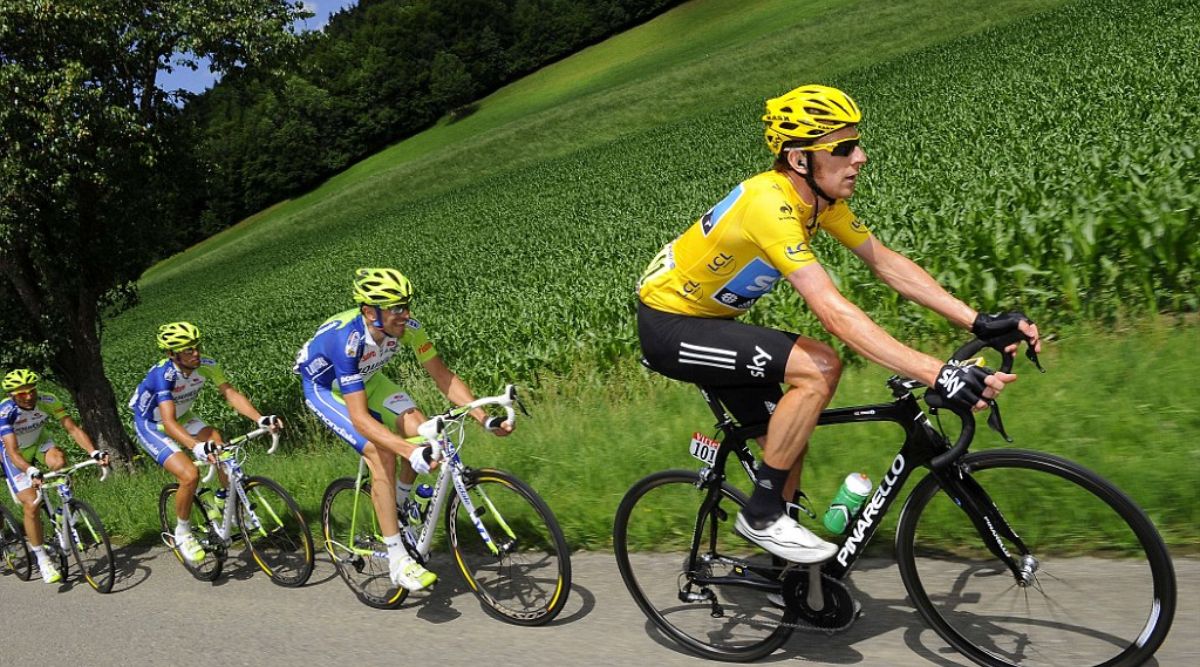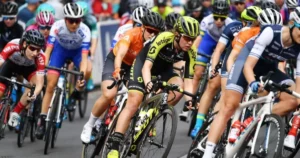Since the inaugural Tour de France in 1903, the race has seen a total of 2,205 stages, encompassing events up to and including the end of the 2021 Tour de France. Commencing in 1919, the coveted yellow jersey, known as the Maillot jaune in French, has been bestowed upon the race leader after each stage.
It’s important to note that despite the stage leader receiving the yellow jersey, they are not officially recognized as the winner of the yellow jersey; they are merely the current wearer. The distinction of being declared the victor of the yellow jersey, and consequently the Tour de France itself, is reserved for the wearer of the yellow jersey only after the conclusion of the final stage.
This article also considers first-place classifications before 1919 as if a yellow jersey were awarded. Notably, instances such as 1914, 1929, and 1931 witnessed multiple cyclists sharing the same leading time, while the 1988 Tour de France featured a “prelude” – an extra stage for a select group of cyclists. As of 2021, a total of 2,208 yellow jerseys have been awarded in the Tour de France, recognizing the achievements of 295 riders.
Individual Records in Cycling History
In past editions of the Tour de France, occasionally a stage was divided into two or three parts. In such instances, only the cyclist leading after the day is considered. The “Jerseys” column denotes the number of days the cyclist wore the yellow jersey, while the “Tour wins” column indicates the frequency of winning the general classification. The subsequent four columns detail the cyclist’s achievements in winning the points classification, the King of the Mountains classification, and the young rider competition. Additionally, the years in which the yellow jersey was worn are highlighted, with bold years signifying an overall Tour victory.
For instance, Eddy Merckx boasts 96 days in the yellow cycling jersey, clinching the general classification five times, the points classification thrice, and the mountains classification twice.
This results table reflects the final overall standings of the general classification after completion of all stages at the 2022 Tour de France.
| Cyclist | Jerseys | Tour Wins | Points Wins | Mountains Wins | Young Rider Wins | Yellow Jersey Years |
| Eddy Merckx | 96 | 5 | 3 | 2 | 0 | 1969, 1970, 1971, 1972, 1974, 1975 (Bold indicates Tour win) |
| Jean Robic | – | 1 | 0 | 0 | 0 | 1947 |
| Charly Gaul | – | 1 | 0 | 0 | 0 | 1958 |
| Jan Janssen | – | 1 | 0 | 0 | 0 | 1968 |
| Lance Armstrong | 83 | 7 | 1 | 0 | 0 | 1999, 2000, 2001, 2002, 2003, 2004, 2005 (Results annulled in 2012) |
| Alberto Contador | – | 3 | 2 | 0 | 0 | 2007, 2009, 2010 (6 days annulled in 2010) |
| Fabian Cancellara | 29 | 0 | 0 | 0 | 0 | As of 2022 |
Retired Cyclists in the Yellow Jersey

| Cyclist | Yellow Jersey Retirements | Retirement Years |
| Eddy Merckx | 2 | 1975, 1977 |
| Jean Robic | 1 | 1947 |
| Charly Gaul | 1 | 1958 |
| Jan Janssen | 1 | 1968 |
| Lance Armstrong | 0 | – |
| Alberto Contador | 0 | – |
| Fabian Cancellara | 0 | – |
Explanation:
- “Yellow Jersey Retirements” indicates the number of times the cyclist retired while wearing the yellow jersey.
- “Retirement Years” lists the respective years in which the cyclist retired while holding the yellow jersey.
Yellow Jersey Winners: A Ranking of the Greatest Cyclists of All Time
Winning the fabled yellow jersey at the Tour de France is one of the greatest achievements in cycling. Worn by the general classification overall leader, it signifies supremacy over three demanding weeks of racing. Here, we analyze the feats of history’s top Maillot John winners to establish a ranking of the greatest cyclists of all time based on their Tour de France success.
First up is Belgium’s Eddy Merckx, who reigns as the undisputed “Cannibal” with 5 yellow jersey victories between 1969-1974. No one dominated Le Grande Boucle as Marx did during his reign of dominance. Miguel Indurain further cemented the Spaniard’s time trial dominance with an extraordinary 5 consecutive wins from 1991-1995. Jacques Anquetil, the first French winner, leads the way with 5 career victories in the class during the 1950s-60s.
Bernard Hainault, nicknamed “The Badger”, terrorized opponents en route to 5 yellow jerseys between 1978-1985. His versatile skills made him a threat in all terrains. Behind him comes a trio of legends who have won the Tour 5 times – three-time defending champion Chris Froome, pre-war pioneer Philipp Thies, and recent king Bradley Wiggins. Two other modern greats who cemented their places among the pantheon with 4 TdF titles are John Ulrich and Alberto Contador.
The Design and Evolution of the Iconic Yellow Jersey
The yellow jersey, known as the “Maillot jaune” in French, is one of the most recognizable symbols in the world of cycling. Its design and evolution over the years reflect not only changes in fashion and technology but also the rich history and traditions of the Tour de France.
Origins and Inception
The yellow jersey was introduced in the inaugural Tour de France in 1903. It was the brainchild of Henri Desgrange, the founder of the Tour, who sought a distinctive way to identify the race leader. The color yellow was chosen for its visibility and its association with the pages of the French sports newspaper, L’Auto, which organized the Tour.
Simple Beginnings
In its early years, the yellow jersey was a simple garment made of wool. The design featured short sleeves and a button-up collar, reflecting the cycling fashion of the time. The iconic color, combined with its practicality, made it an instant hit.
Material Evolution
Over the decades, advancements in textile technology influenced the jersey’s material. Wool gave way to synthetic fabrics, providing better breathability, moisture-wicking properties, and improved aerodynamics. These changes aimed to enhance the comfort and performance of cyclists.
Sponsorship and Logos
As the Tour de France gained popularity, the yellow jersey became a valuable advertising space. Sponsorship logos and brand names started to appear on the jersey, adding a commercial dimension to its design. This evolution mirrored trends in sports marketing.
Design Modifications
The basic design of the yellow jersey has remained consistent, with its distinctive color being its defining feature. However, subtle modifications, such as changes in collar styles, sleeve lengths, and zipper placements, have occurred over the years to enhance functionality and aesthetics.
Technological Innovations
The incorporation of technological advancements has played a role in the jersey’s evolution. Lightweight and breathable fabrics, improved stitching techniques, and innovative construction methods contribute to the jersey’s modern design, meeting the demands of professional cyclists.
Cultural Impact
The yellow jersey has transcended its utilitarian purpose to become a cultural icon. It symbolizes excellence, achievement, and the pursuit of victory in the challenging world of professional cycling. Fans worldwide recognize and celebrate the wearer of the yellow jersey.
Collector’s Items
Over the years, various editions of the yellow jersey have become collector’s items. Retro designs and limited-edition releases celebrate the history of the Tour de France, allowing fans to own a piece of cycling heritage.
Iconic Moments
The yellow jersey has been present during some of the most iconic moments in cycling history. From legendary stage victories to grueling mountain ascents, the jersey has witnessed the triumphs and challenges of cyclists on their quest for Tour de France glory.
Continued Legacy
As the Tour de France continues to evolve, so too will the yellow jersey. Its design will likely undergo further refinements, influenced by both technological advancements and a nod to the timeless traditions that make it an enduring symbol of excellence in the world of cycling.
Conclusion
The yellow jersey has come a long way since its initial introduction in 1903. From simple wool jerseys to technologically advanced garments incorporating the latest materials and designs, it has evolved while maintaining its iconic status. Worn by some of the greatest cyclists over the decades, making history at the Tour de France, the yellow jersey symbolizes the triumphs, struggles and legends of the sport. As professional cycling continues to push the limits of human achievement and endurance, jersey design will likely evolve to support elite athletes as well. However, its memorable color and association with excellence on two wheels will surely live on, capturing the spectacle, drama, and rich traditions of Le Grande Boucle for generations to come. Learn more cycling information “Cycling Events in Colombia“








